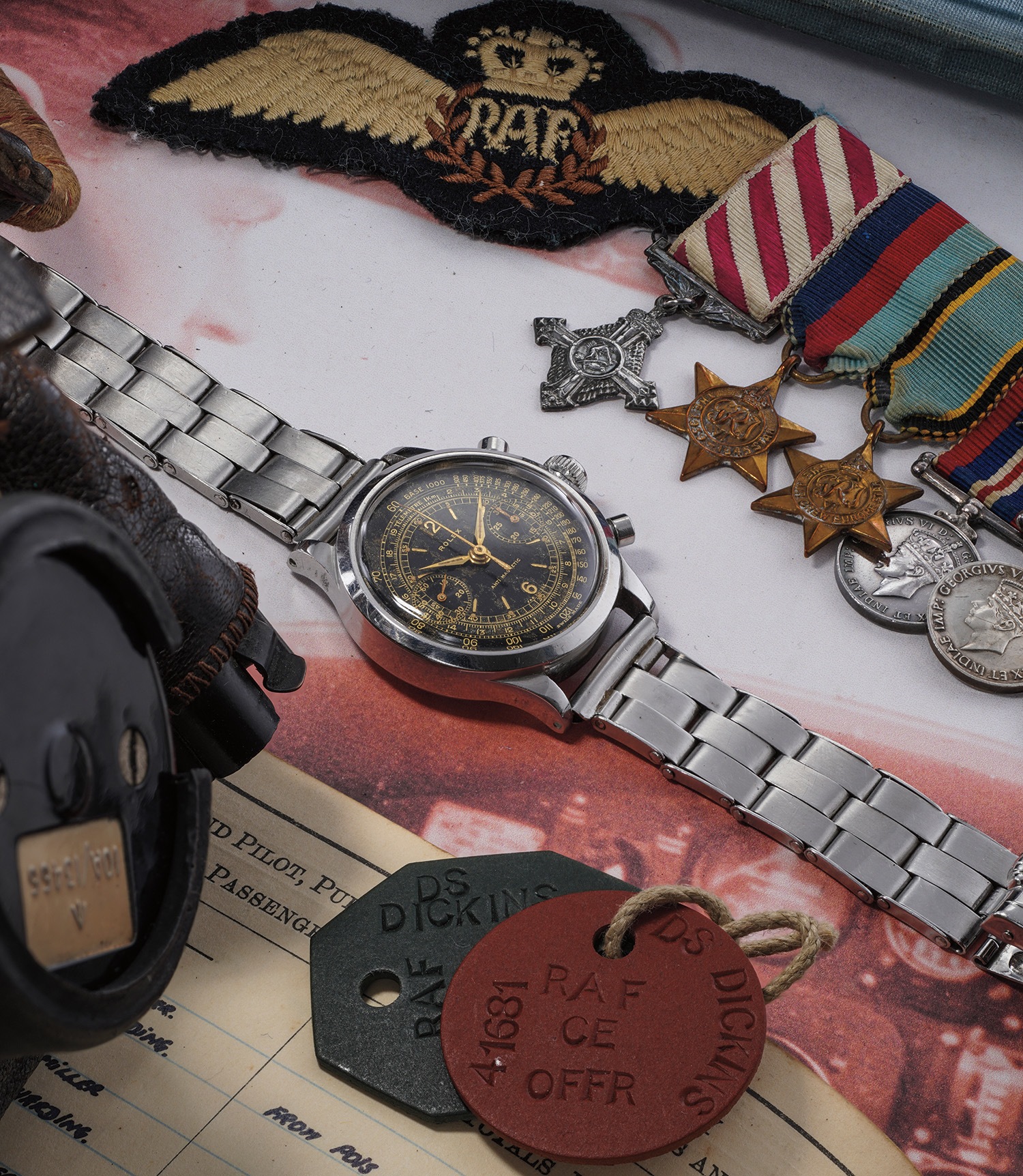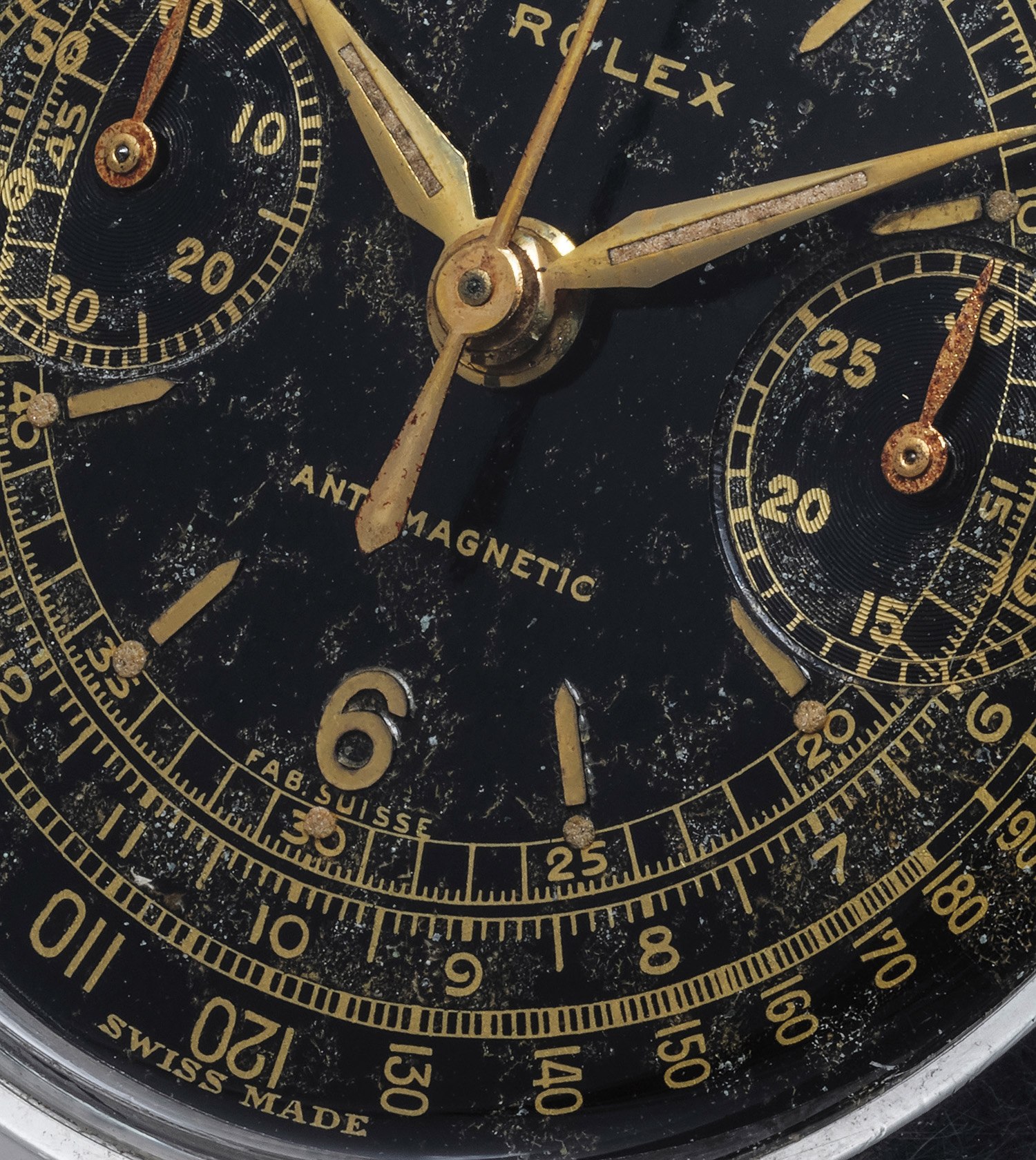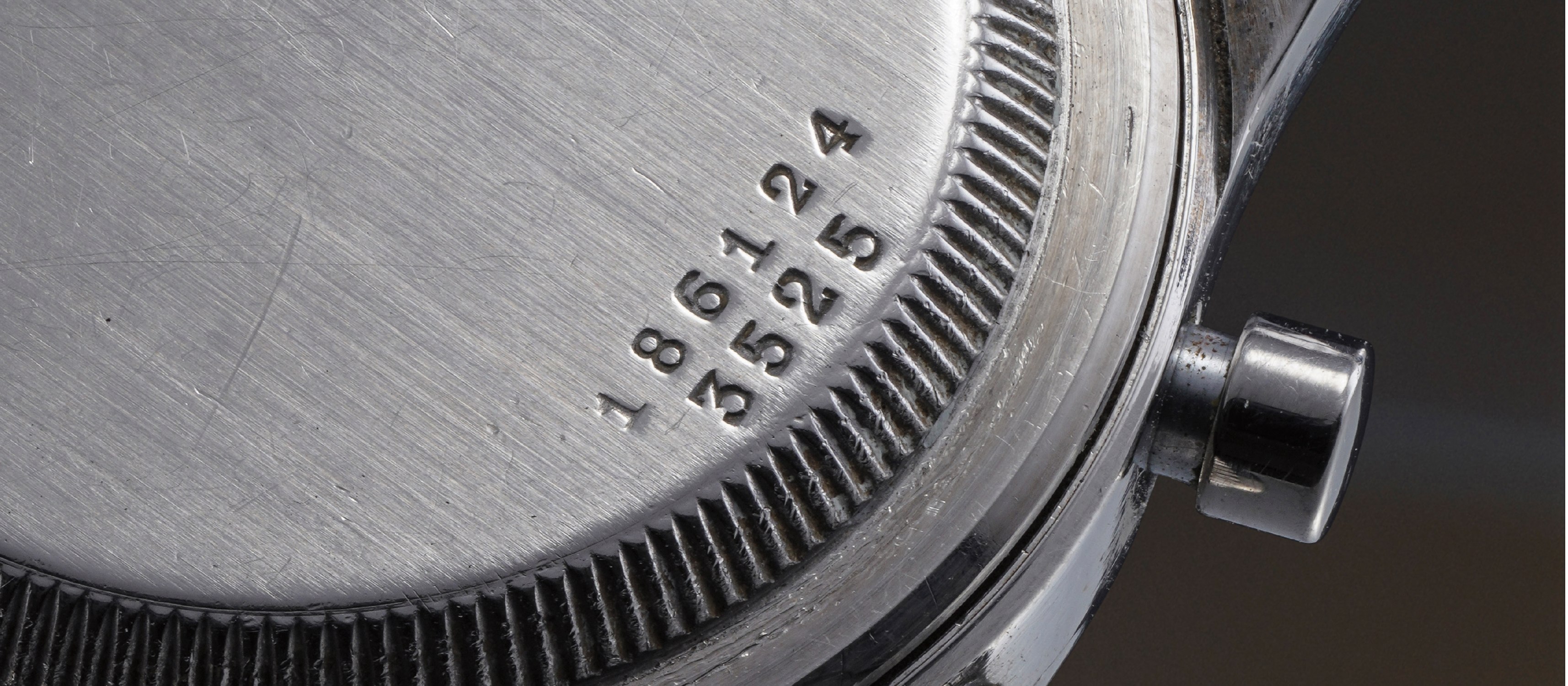





196
Rolex
Ref. 3525
"POW" "Monoblocco"
An historically interesting and fascinating stainless steel chronograph wristwatch with black dial and military documentation
Full-Cataloguing
Given the approximate production date of this watch, and the fact that Dickins’ 3525 (186’124) along with other known, notable POW watches of Williams (186’045) and Imeson (186’052) all fall within a tigserial range, we can surmise this watch was most likely delivered to the Flight Lieutenant Dickins whilst at Stalag Luft III, and almost certainly used in the planning of what we now know as The Great Escape of 1944. It is accompanied by a plethora of military accessories, including Squadron Leader Dickins’ “Top Secret clearance card”, typed & signed CV, a 1950s headphone-equipped leather helmet, two military caps, his dress medals and insignia and, most notably, three pilot’s logbooks. In superb condition and retaining its original luminous material, the present piece is further distinguished by the unusual ageing of the ‘straight signature’ dial.
Rolex
Swiss | 1905Founded in 1905 England by Hans Wilsdorf and Alfred Davis as Wilsdorf & Davis, it soon became known as the Rolex Watch Company in 1915, moving its headquarters to Geneva in 1919. Like no other company, the success of the wristwatch can be attributed to many of Rolex's innovations that made them one of the most respected and well-known of all luxury brands. These innovations include their famous "Oyster" case — the world's first water resistant and dustproof watch case, invented in 1926 — and their "Perpetual" — the first reliable self-winding movement for wristwatches launched in 1933. They would form the foundation for Rolex's Datejust and Day-Date, respectively introduced in 1945 and 1956, but also importantly for their sports watches, such as the Explorer, Submariner and GMT-Master launched in the mid-1950s.
One of its most famous models is the Cosmograph Daytona. Launched in 1963, these chronographs are without any doubt amongst the most iconic and coveted of all collectible wristwatches. Other key collectible models include their most complicated vintage watches, including references 8171 and 6062 with triple calendar and moon phase, "Jean Claude Killy" triple date chronograph models and the Submariner, including early "big-crown" models and military-issued variants.